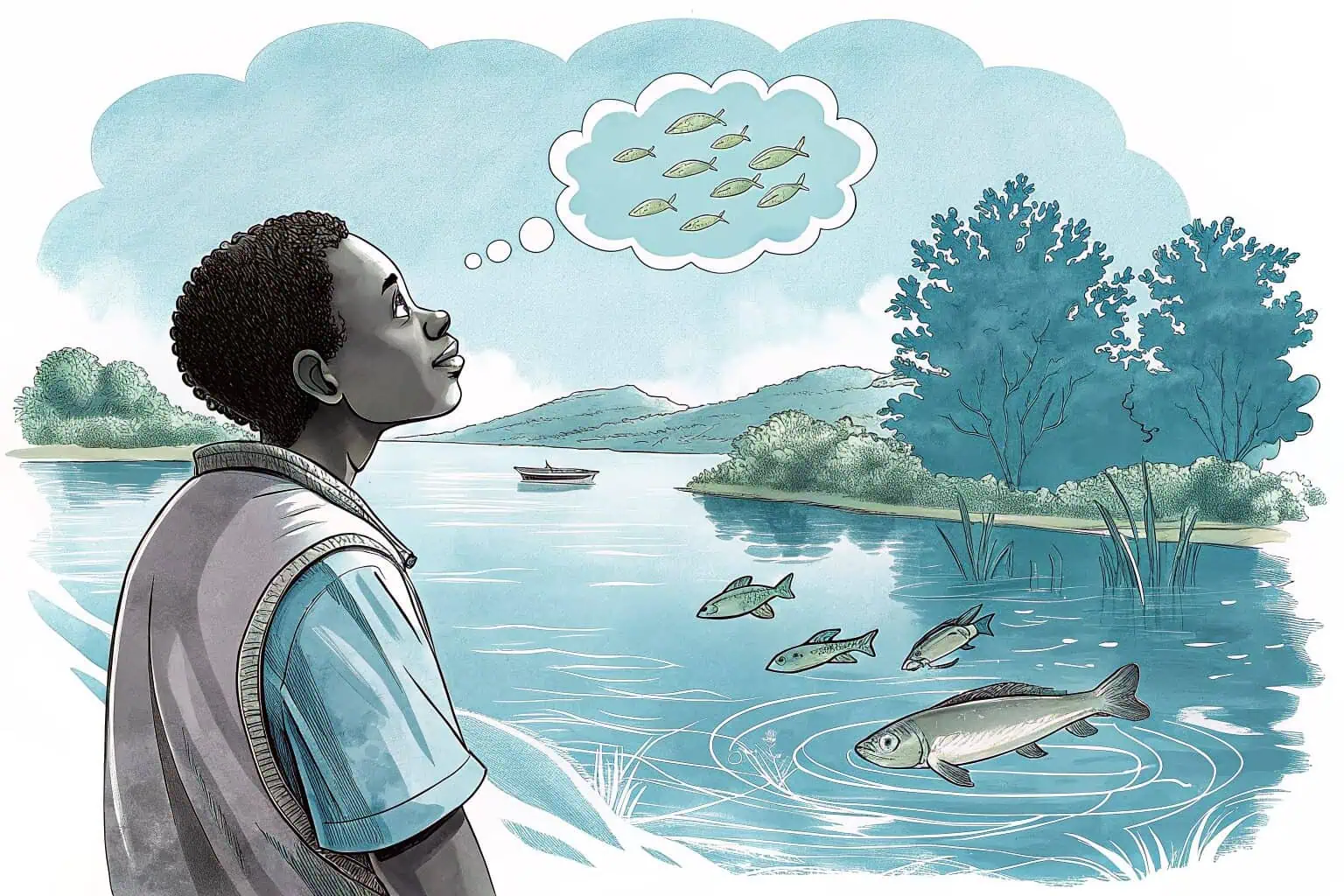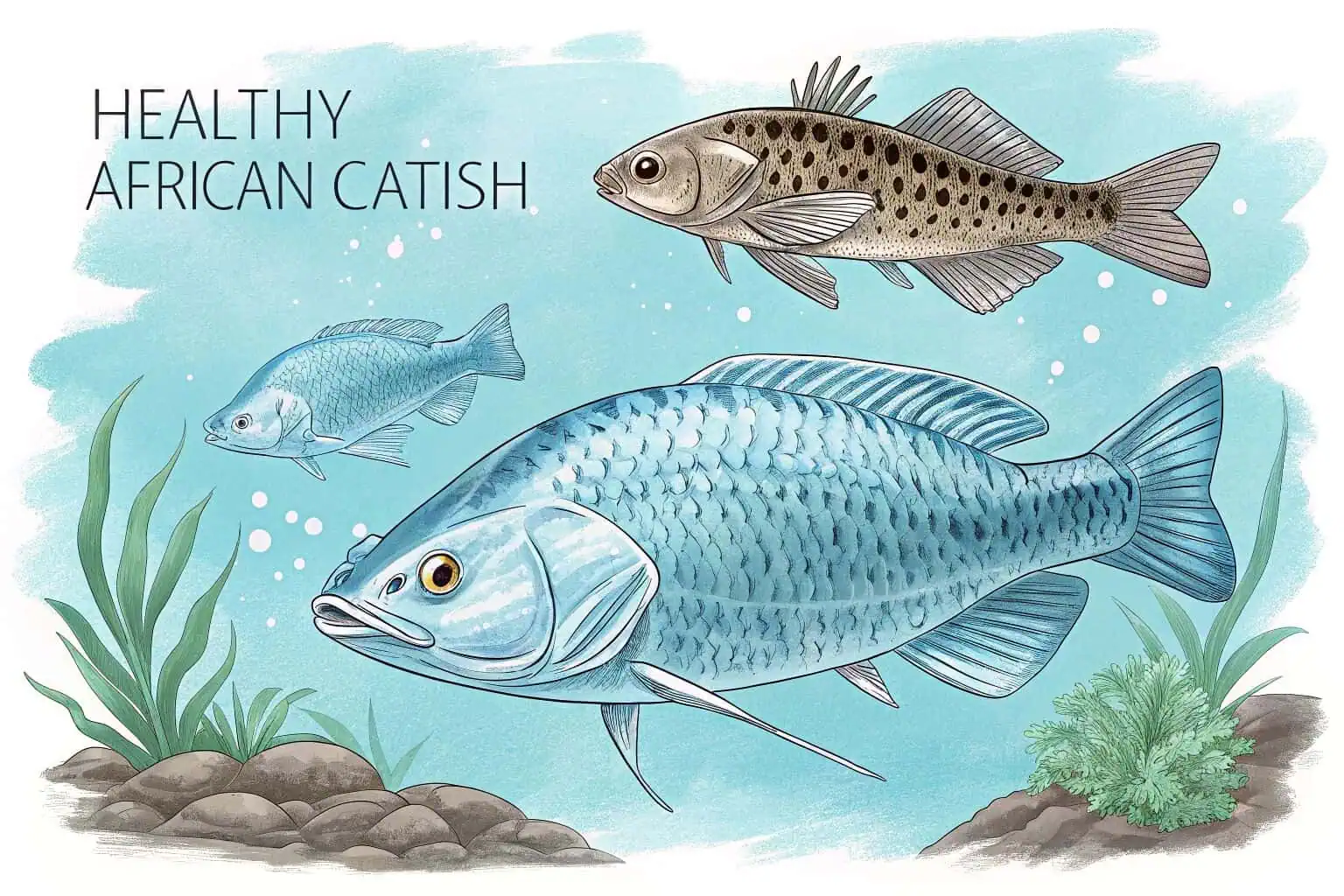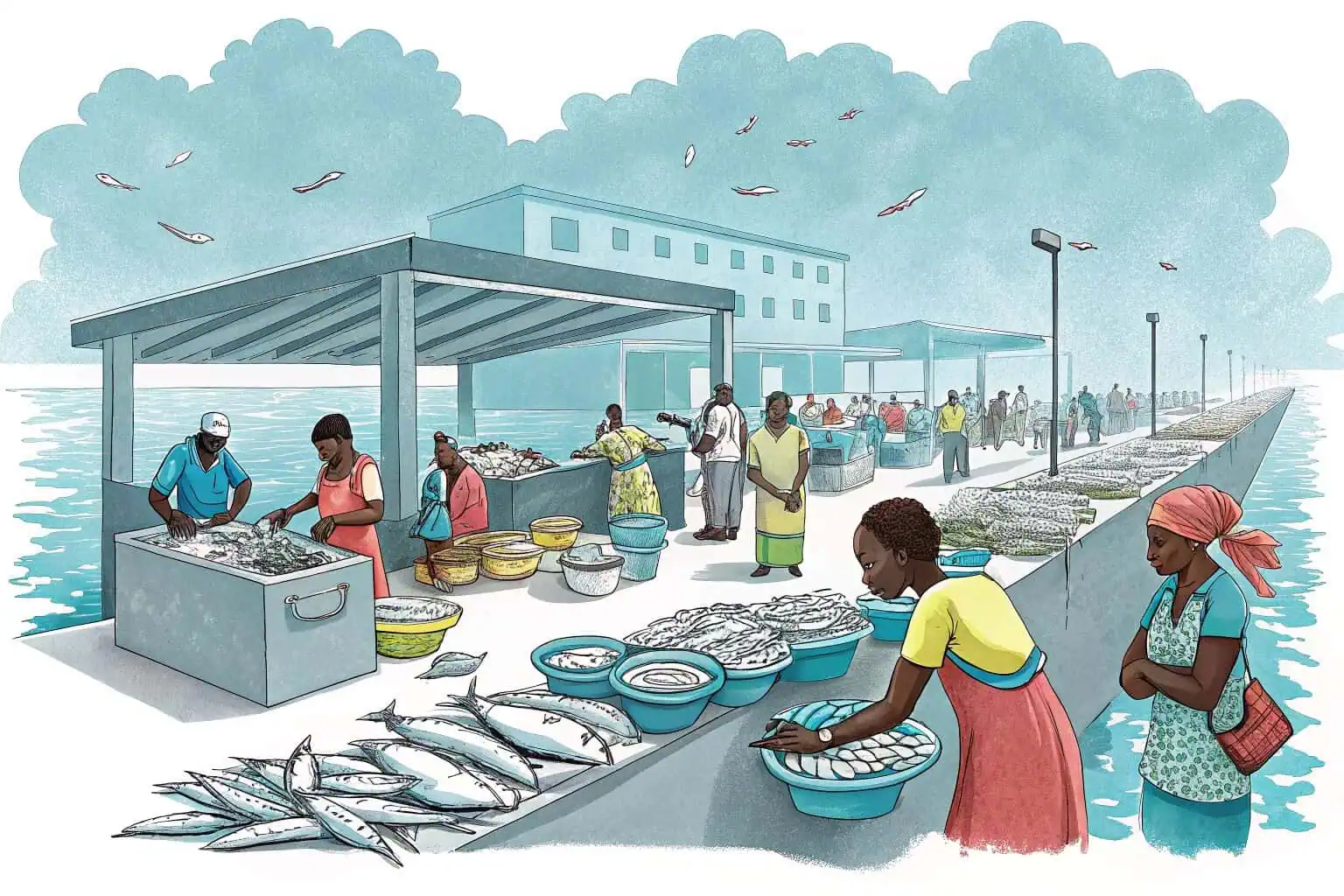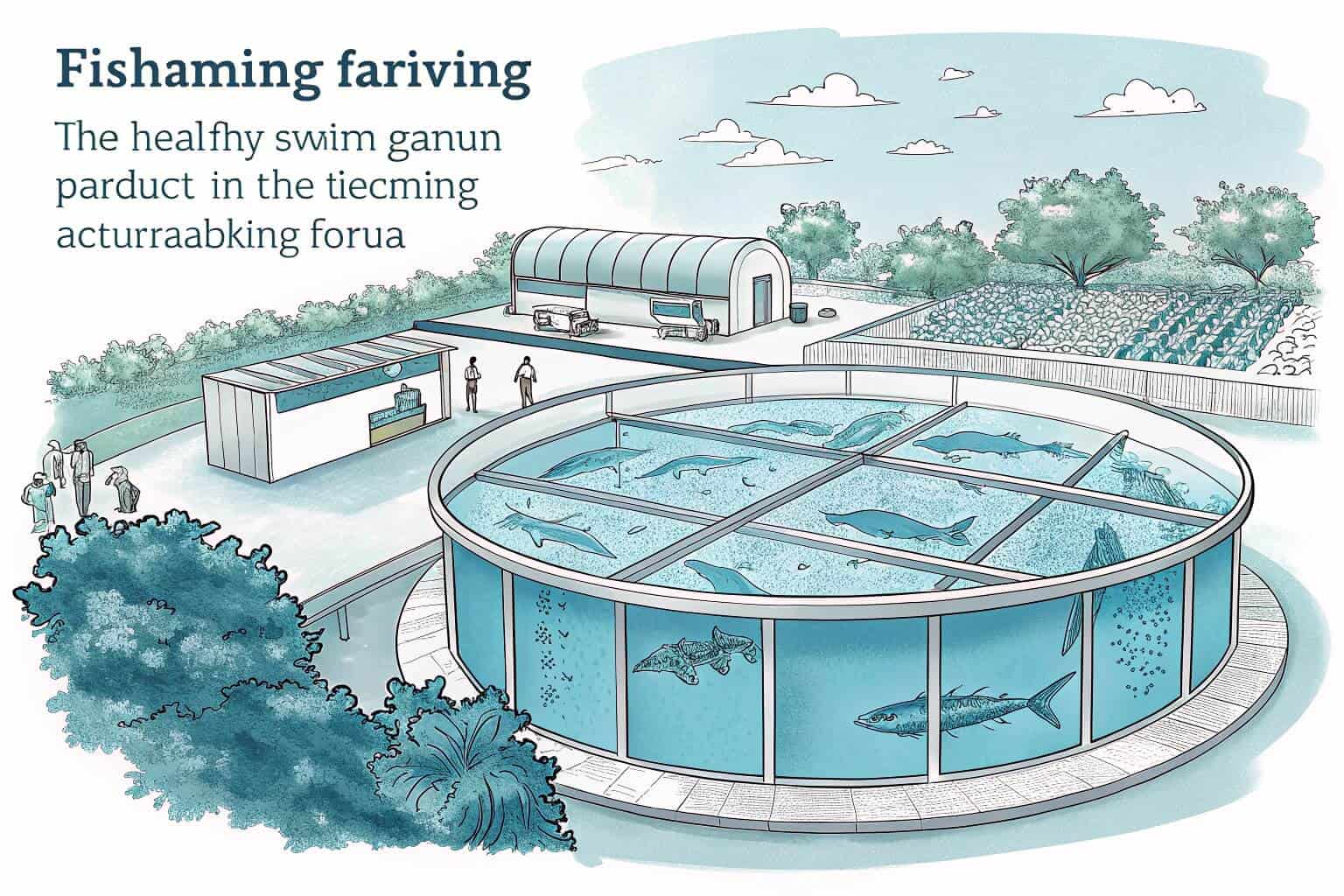How to choose the right fish species to farm in Ghana?
Many Ghanaian fish farmers struggle to choose the right fish for their farms—a common challenge of great significance.
Choosing the correct fish species like Tilapia or Catfish is key for a successful and profitable fish farm in Ghana, matching local demand and farming conditions.

Selecting the right fish can feel overwhelming, but it doesn't have to be. Let's explore what makes a fish species a good fit for your Ghanaian aquaculture venture, ensuring you make an informed decision that leads to a thriving business.
Which fish is best for fish farming in Ghana?
Discovering the fish that ensures maximum success in Ghana's waters requires careful consideration.
Tilapia and Catfish are generally the best for fish farming in Ghana due to their adaptability, market demand, and resilience to local conditions.

As someone who's been in the Ghanaian aquaculture scene for years, I've seen firsthand how crucial this choice is. The local diet heavily features fish, but wild catches can't keep up. This is where aquaculture, particularly with robust species, steps in. When I first started, I experimented with a few types, but Tilapia1 and Catfish2 quickly proved their worth. They aren't just popular; they are survivors, capable of thriving even when conditions aren't perfect. This resilience is vital, especially when you're dealing with the learning curve of fish farming.
Adaptability to Local Climate
Ghana's tropical climate means high temperatures and specific water quality parameters. Tilapia, for instance, are well-known for their tolerance to a range of water conditions and temperatures, making them a relatively low-risk option for new and experienced farmers alike. Catfish, particularly the African Catfish (Clarias gariepinus)3, are also incredibly hardy. They can tolerate low oxygen levels because they can breathe atmospheric oxygen. This is a huge advantage, especially in densely stocked ponds or during dry spells when water levels might drop.
Market Demand and Consumer Preference
There's no point farming a fish nobody wants to buy. In Ghana, Tilapia is a household name, loved for its taste and versatility in local dishes. Catfish also has a strong market, often preferred for smoking or in specific regional cuisines. I always advise farmers to visit local markets4, talk to sellers, and understand what consumers are looking for. This insight is invaluable. For example, some markets might prefer larger-sized Tilapia, while others might have a higher demand for smoked catfish. Knowing this helps in planning your production cycle and harvesting strategy.
Availability of Quality Fingerlings and Feed
Starting with healthy, genetically sound fingerlings is paramount. While Tilapia fingerlings are generally more accessible in Ghana, finding reliable suppliers for Catfish can sometimes be a challenge, though this is improving. Similarly, the cost and availability of quality fish feed can significantly impact profitability. I've seen many farms struggle because they underestimated feed costs or used substandard feed, which leads to poor growth and health issues. It's crucial to research and secure consistent sources for both fingerlings and feed before you even stock your ponds. Many farmers are now exploring local ingredients to formulate their own feed5, which can be a cost-effective solution if done correctly.
| Feature | Tilapia | Catfish (African) |
|---|---|---|
| Climate Adaptability6 | High tolerance to varied conditions | Very hardy, can breathe air |
| Market Demand7 | Very high, staple food | High, especially for smoking |
| Fingerling Access | Generally good | Improving, can be a challenge |
| Feed Cost | Can be significant, omnivorous | Can be significant, carnivorous |
| Growth Rate8 | Moderate to Fast | Fast |
Is fish farming profitable in Ghana?
Considering profits in Ghanaian fish farming is a key concern for any aspiring entrepreneur.
Yes, fish farming in Ghana can be highly profitable if managed efficiently with the right species, good practices, and a solid business plan.

I've seen many people turn their passion for fish farming into a successful business here in Ghana. The demand for fish is consistently high, and local supply often falls short. This gap creates a significant opportunity. However, profitability isn't guaranteed; it's earned through hard work and smart decisions. From my experience, the initial investment9 can seem daunting – setting up ponds, sourcing quality fingerlings, and securing feed. But with careful planning, these costs can be managed. The government is also increasingly supportive, offering subsidies and training, which can ease the financial burden. I always tell newcomers that understanding the market is just as important as understanding the fish. Knowing when to sell, who to sell to, and at what price can make all the difference. It's not just about growing fish; it's about growing a business.
Key Factors Influencing Profitability
Several elements determine how much money you can make. Scale of operation is one; larger farms often benefit from economies of scale10, reducing per-unit costs. However, even small-scale farms can be profitable if they focus on niche markets or value-added products like smoked or processed fish. Management practices are critical. This includes everything from water quality management and disease prevention to efficient feeding strategies. Poor management can lead to high mortality rates and slow growth, eating into your profits. I've learned that regular monitoring and quick responses to any issues are essential.
Cost-Benefit Analysis Basics
Before diving in, I always recommend doing a thorough cost-benefit analysis. List all your potential costs: pond construction, fingerlings, feed, labor, medication, utilities, and transportation. Then, project your potential revenue based on expected harvest size, survival rates, and market prices. Don't forget to factor in a contingency for unexpected problems. For example, feed usually constitutes the largest operational cost, sometimes up to 60-70% of total expenses. Finding ways to optimize feed conversion ratios11 (FCR) – the amount of feed needed to produce one kilogram of fish – is a direct path to higher profits. My Bancy collapsible fish tanks, for instance, can help manage space efficiently and are easier to maintain, potentially reducing some operational headaches and costs.
Market Access and Pricing Strategies
Having a ready market for your fish is crucial. Some farmers sell directly to consumers at the farm gate, while others supply to market women, restaurants, or hotels. Each channel has its pros and cons regarding price and volume. I've found that building relationships with buyers12 and understanding their needs helps in securing better prices. Also, timing your harvest to coincide with periods of high demand or low supply can significantly boost your earnings. For instance, fish prices often go up during festive seasons.
| Profitability Factor | Description | Impact on Profit |
|---|---|---|
| Scale of Operation | Size of the farm (small, medium, large) | High |
| Management Practices13 | Water quality, feeding, disease control | Very High |
| Feed Costs | Price and efficiency of fish feed | Very High |
| Market Price14 | Prevailing price of fish in the market | High |
| Species Choice | Growth rate, disease resistance, and market acceptance of the chosen species | High |
What is the most profitable type of fish farming?
Maximizing returns in fish farming hinges on your approach and available resources.
Integrated fish farming systems and farming high-value species like Catfish or specialized Tilapia strains often yield the highest profits if managed well.

In my journey through Ghana's aquaculture sector, I've observed that while traditional pond farming of Tilapia is common and can be profitable, certain approaches tend to generate better financial outcomes. It's not just about what fish you farm, but how you farm it. I've seen innovative farmers achieve remarkable success by thinking outside the box. For example, some combine fish farming with poultry or vegetable farming, where waste from one system becomes an input for another. This not only reduces costs but also creates additional revenue streams. The key is to maximize resource utilization and minimize waste. My company, Bancy, focuses on providing durable and customizable solutions like our collapsible fish tanks15, which can be adapted for various farming intensities and systems, helping farmers optimize their operations for better profitability.
Intensive vs. Extensive Farming
Extensive farming typically involves low stocking densities in large ponds with minimal inputs, relying on natural productivity. It's less costly to set up but yields are lower. Intensive farming, on the other hand, involves high stocking densities in smaller, controlled environments (like tanks or raceways), with significant inputs like high-quality feed and aeration. While the initial and operational costs are higher, the yields per unit area are much greater. I've found that many successful commercial farms in Ghana are moving towards semi-intensive or intensive systems, especially for species like Catfish, as this allows for better control and higher productivity. Our Bancy galvanized pipe fish tanks16 are excellent for such setups, offering durability and ease of management.
Niche Markets and Value Addition
Farming for niche markets can be very profitable. This could mean raising ornamental fish, organic fish, or specific strains of Tilapia that command a premium price. Value addition is another powerful strategy. Instead of selling raw fish, you could process it – smoking, filleting, or marinating – to sell at a higher price. I know farmers who have significantly increased their income by setting up small smoking facilities17 next to their farms. This requires additional investment and skills but can differentiate your product and attract a different customer base.
Integrated Multi-Trophic Aquaculture
This is a more advanced concept but holds great promise. IMTA18 involves farming different species from different trophic levels together in a way that mimics a natural ecosystem. For example, waste from fish can provide nutrients for filter-feeding shellfish or seaweed, which in turn help clean the water for the fish. While it requires more technical expertise, IMTA can improve sustainability and profitability by creating multiple products and reducing environmental impact. I believe as the industry matures in Ghana, we'll see more adoption of such innovative and efficient systems.
| Farming Type/Strategy | Potential Profitability | Key Considerations |
|---|---|---|
| Intensive Catfish | High | High input costs, technical skill, disease management |
| Specialized Tilapia | Medium to High | Market demand for specific strain, quality fingerlings |
| Integrated Farming19 | High | System design, managing multiple species, market for all |
| Value Addition20 | Medium to High | Processing equipment, market for processed products |
| Extensive Tilapia | Low to Medium | Lower yield, land availability |
What fish is popular in Ghana?
Understanding the most popular fish among Ghanaians is crucial for any fish farmer.
Tilapia is overwhelmingly popular in Ghana, followed by Catfish and various marine species; it's a staple in many local dishes.

Having spent years in Ghana, I can tell you that fish is more than just food here; it's a cultural cornerstone. And when it comes to popularity, Tilapia reigns supreme. You'll find it grilled by the roadside, in stews, soups – everywhere. Its mild flavor and flaky texture make it incredibly versatile. This widespread appeal is a huge advantage for Tilapia farmers. Catfish, especially smoked catfish, also holds a special place in Ghanaian cuisine, particularly in certain traditional dishes. While marine fish like mackerel, herring, and tuna are also consumed in large quantities, much of this is imported or from declining marine stocks, which further highlights the opportunity for locally farmed fish to fill the gap. As a provider of aquaculture equipment21 like our Bancy galvanized sheet fish tanks, we see the direct impact of this demand on the growth of fish farms across the country.
Tilapia: The People's Choice
There's a reason Tilapia is so beloved. It's affordable, readily available (thanks in part to aquaculture), and cooks beautifully. From banku and tilapia to fufu with tilapia soup, it's a go-to protein source for many families. When I talk to market vendors, they always emphasize the consistent demand for fresh, good-sized Tilapia22. This makes it a relatively safe bet for farmers, provided they can produce quality fish efficiently. The challenge often lies in competing on price while maintaining quality, especially with cheaper imported alternatives sometimes flooding the market.
Catfish: A Strong Contender
While Tilapia might be the everyday favorite, Catfish has a dedicated following. Its rich, distinct flavor is highly prized, particularly when smoked. Smoked catfish is an essential ingredient in many Ghanaian soups and stews, adding a unique depth of flavor. The demand for live catfish23 for 'point-and-kill' restaurants is also growing, especially in urban areas. Farming catfish can be more technically demanding than Tilapia, but the potentially higher market price, especially for larger sizes, can make it very rewarding. I've seen farmers who specialize in Catfish do very well by targeting these specific market segments.
Other Notable Fish
Beyond Tilapia and Catfish, other freshwater and marine species are consumed, though their popularity for local farming might be less pronounced. For instance, some farmers are exploring other indigenous species or even exotic ones, but this often requires more research into their viability and market acceptance. The government's push to reduce fish imports also creates opportunities for a wider variety of locally farmed fish if they can meet consumer preferences and be produced economically. It's an evolving landscape, and staying attuned to consumer tastes is key for long-term success.
| Fish Type | Popularity Level | Common Uses in Ghana | Farming Viability |
|---|---|---|---|
| Tilapia | Very High | Grilled, fried, stews, soups (e.g., Banku and Tilapia) | High |
| Catfish | High | Smoked, soups, stews, 'point-and-kill' restaurants | High |
| Mackerel (Marine)24 | High | Smoked, fried, stews (mostly imported) | N/A (Marine) |
| Herring (Marine) | Medium | Smoked, dried (mostly imported) | N/A (Marine) |
| Tuna (Marine) | Medium | Canned, fresh (mostly industrial fishing/imported) | N/A (Marine) |
Conclusion
Choosing the right fish, understanding profitability, and knowing market preferences are crucial for success in Ghana's burgeoning aquaculture industry. With dedication and knowledge, fish farming offers a promising venture.
-
Exploring this link will provide insights into why Tilapia is a top choice for aquaculture, especially in Ghana. ↩
-
This resource will explain the advantages of Catfish farming, highlighting its resilience and market demand. ↩
-
Explore the advantages of farming African Catfish, including their hardiness and adaptability, which can enhance your aquaculture success. ↩
-
Learn effective strategies for engaging with local markets to understand consumer preferences and boost your fish farming success. ↩
-
Discovering the advantages of local ingredients can lead to cost-effective and sustainable feed solutions for your fish farming. ↩
-
Understanding climate adaptability can help in selecting the right fish for aquaculture in varying environments. ↩
-
Exploring market demand can guide investment decisions in aquaculture and fish farming. ↩
-
Comparing growth rates is crucial for optimizing production timelines and profitability in fish farming. ↩
-
Understanding the financial aspects is crucial; this resource will guide you through calculating your startup costs effectively. ↩
-
Understanding economies of scale can help you optimize your farm's profitability and efficiency. ↩
-
Optimizing feed conversion ratios can significantly boost your profits in fish farming. Discover effective strategies to improve FCR. ↩
-
Exploring this topic can provide insights on effective strategies to enhance your sales through buyer relationships. ↩
-
Explore this link to discover best practices that can significantly enhance fish farming profitability. ↩
-
Learn about the dynamics of fish pricing to better strategize your sales and improve profitability. ↩
-
Learn about the advantages of collapsible fish tanks and how they can optimize your fish farming operations. ↩
-
Discover the benefits of using Bancy galvanized pipe fish tanks for better management and durability in fish farming setups. ↩
-
Discover how smoking facilities can elevate your fish products, attract new customers, and significantly boost your income. ↩
-
Exploring this resource will provide you with a deeper understanding of Integrated Multi-Trophic Aquaculture and its advantages for sustainability. ↩
-
Learn about Integrated Farming and its benefits in aquaculture, including sustainability and profitability. ↩
-
Discover the significance of Value Addition in aquaculture and how it can enhance profitability through processing. ↩
-
Learning about essential aquaculture equipment can help you understand the infrastructure needed for successful fish farming. ↩
-
Discover tips on sourcing quality Tilapia and the importance of freshness in fish markets. ↩
-
Discover the rising trend of live catfish in urban dining and its appeal to food enthusiasts. ↩
-
Discovering delicious Mackerel recipes can inspire you to incorporate this nutritious fish into your meals. ↩